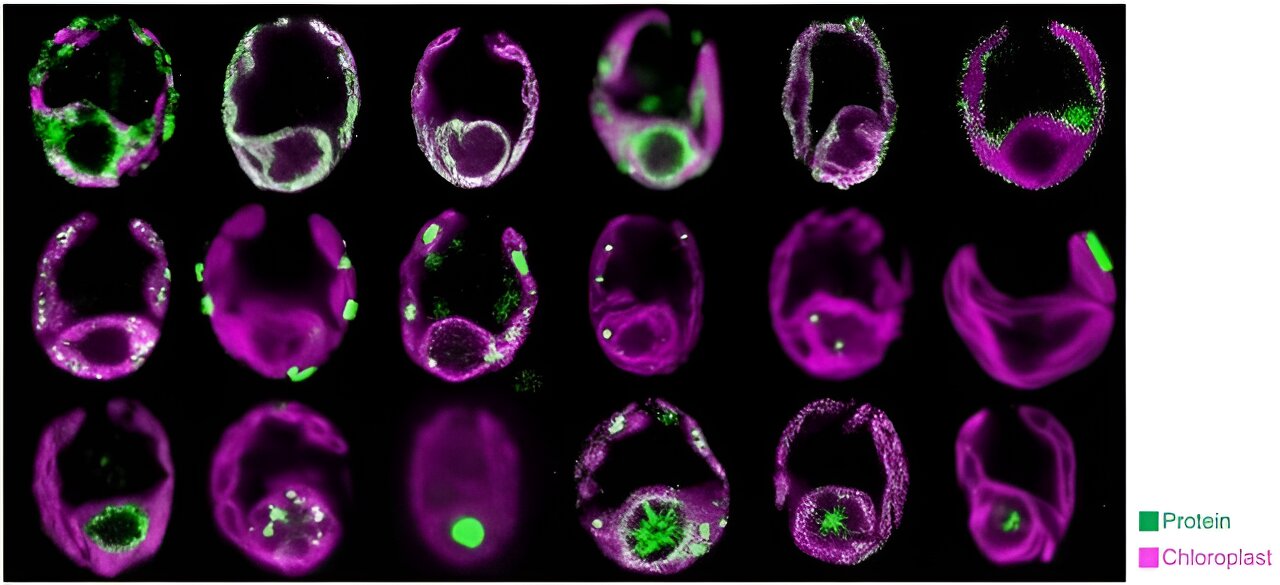Plants and algae convert solar energy into chemical energy through photosynthesis. This process is vital for life on Earth and provides us with oxygen, food, fuels, and other valuable products. Photosynthesis occurs inside the cells, in structures called chloroplasts.
To better understand the inner workings of these structures, researchers have mapped the locations of 1,034 proteins inside the chloroplast of the unicellular green alga Chlamydomonas. This map is a spatial atlas of the chloroplast proteome—all of the proteins that the organism can produce.
The work is published in the journal Cell.
The localization patterns of distinct proteins uncovered new chloroplast structures and revealed novel spatial organization inside the chloroplast. The researchers also identified new components of known chloroplast structures such as the chloroplast envelope, its DNA-protein complexes, fat storage microcompartments, and protein bodies involved in capturing carbon dioxide from the atmosphere.
The team identified these new components by investigating their interaction with known proteins. They found many proteins that resided in both the chloroplast and other cellular structures, suggesting new function and communication between those structures.
The scientists then applied machine learning methods on the protein atlas to generate predictions for the location of all of the proteins in Chlamydomonas. This enabled them to assign putative functions to many uncharacterized proteins based on their cellular location.
This atlas offers scientists insights into the function of proteins and the organization of the chloroplast in the organism. Using this atlas and artificial intelligence algorithms, the investigators were also able to predict the locations for all proteins in Chlamydomonas.
Engineering crop plants will help address food, fuel, and product production challenges that arise from climate change. Scientists need a basic biological understanding of photosynthesis to engineer crops with improved productivity. This research lays the groundwork to decipher the inner workings of the chloroplast, the cell structure at the heart of photosynthesis.
More information:
Lianyong Wang et al, A chloroplast protein atlas reveals punctate structures and spatial organization of biosynthetic pathways, Cell (2023). DOI: 10.1016/j.cell.2023.06.008
Citation:
Scientists build a spatial atlas of the chloroplast proteome, the home of photosynthesis (2023, October 7)
retrieved 7 October 2023
from https://phys.org/news/2023-10-scientists-spatial-atlas-chloroplast-proteome.html
This document is subject to copyright. Apart from any fair dealing for the purpose of private study or research, no
part may be reproduced without the written permission. The content is provided for information purposes only.
Denial of responsibility! My Droll is an automatic aggregator of Global media. In each content, the hyperlink to the primary source is specified. All trademarks belong to their rightful owners, and all materials to their authors. For any complaint, please reach us at – [email protected]. We will take necessary action within 24 hours.


